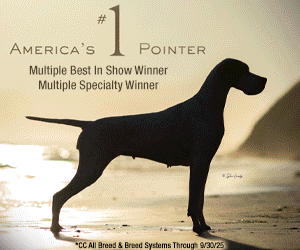Westminster Huckster or Hero?
One aspect of Westminster is predictably devoid of the thrills and surprises that keep us coming back. Exhibitors collectively dread those endless hours of benching. It’s hard to imagine what it was like when show regulations required all exhibits to be benched throughout the show, which customarily ran four or five days. That may seem unbearable, it really wasn’t. There was a lot going on at shows back then.
For instance, on May 6, 1877 the Times ongoing Westminster coverage announced, “On Friday morning a grand auction of over 150 dogs will be held. The sale will be without reserve and excellent bargains may be had.” If that wasn’t enough reason to hang around, exhibitors could look forward to the arrival of Rev. J. Cummings Macdona. His superstar status as a judge brought him to Westminster, but that wasn’t all. This Methodist minister from Cheshire was equally famed as a breeder and broker. He’d brought boatloads of important dogs to America and didn’t disappoint this time. Macdona and his son arrived with an impressive contingent. His father arrived with more a few days later, in time for Westminster’s dinner welcoming three generations of this illustrious family.
Historically, Macdona is most closely linked to St. Bernards. By 1877 he was fading out of that game, but not altogether, as the Times reported. “The steamship Nevada arrived at the wharf about 3:30 yesterday afternoon. Among her passengers was Mr. G. de Landre Macdona, Cheshire England, father of Rev. Mr. Macdona, the great English dog breeder. Mr. Macdona brought with him two English Setters, two magnificent St. Bernard dogs, a black retriever, a red-and-white Irish Setter puppy, a Fox Terrier puppy, and a black Skye Terrier.
The Times confirmed that they could all be viewed at the Garden. “The great dog show is astonishing its promoters with its success. …all day yesterday the Hippodrome was crowded to excess with elegantly dressed ladies and gentleman.” A major attraction was Rover, the celebrated Irish Setter Macdona brought over. Shown “For Exhibition Only”, he was subsequently offered at stud to English, Irish, and Gordon bitches. His St. Bernard imports also drew big crowds, but the Times cautioned, “The prize St. Bernard dog bit two persons yesterday,” and recommended, “giving him a wide berth”.
Long before the phrase was coined, Macdona realized that “any publicity is good publicity.” Every detail of his trip became media fodder. Following the show on May 14 the Times reported, “To those who saw the Rev. C. Macdona, the great English dog authority, at the bench show last week, wearing a tweed suit and smoking a cigar, his appearance last evening at the Church of the Holy Trinity, robed in flowing black silk with a regulation white neckband was a revelation.” After his sermon, Macdona caught the train to Pittsburgh to deliver a “celebrated setter bitch.” That was Magnet, another spectacular sale that made headlines.
Vero Shaw called Macdona “a clever propagandist”. The acerbic James Watson was less courteous. “The Rev. J.C. Macdona was the great English exploiter of the breed and it was his importations and his breeding that brought the St. Bernard prominently before the British public. Mr. Macdona was adept at keeping in the limelight and was a very conspicuous figure at the leading dog shows.” In retrospect, Macdona was harshly criticized for facilitating the 1860s St. Bernard fad as the Times derisively detailed on October 24, 1884.
“It is popularly believed that every stormy night the monks of St. Bernard send out a dog to save travelers. It carries a blanket, two bottles of hot water, a mustard plaster, two coarse towels, a basket filled with roast chicken and three kinds of vegetables, and a liquor case containing rum, lemon peel, sugar, and water. …On coming up with the traveler, who is always lying insensible, half-covered with snow, the dog clears away the snow, removes the travelers clothes, places the hot water bottles at his feet, the mustard plaster on his stomach, rubs the insensible man with the coarse towels until his circulation is restored, then the dog dresses his patient and wraps him in the blanket.” Continuing this theme, the story describes the dog mixing a Hot Toddy, serving dinner and placing the victim on his back to gallop back to the monastery.
Emphasizing that that the monks didn’t invent this irresistible sales pitch, “but it must be confessed that they did not take pains to contradict it.” The article calculated that it resulted in over 1000 puppy sales annually, which would translate into almost $500,000 today. “The monks can hardly be expected to destroy this flourishing trade by exploding the myth.” It wrapped up with this little chestnut, “The monks do not themselves vouch for the dogs sold. The whole business of selling dogs to travelers is placed in the hands of an English Methodist.”
Macdona’s questionable ethics and tactics didn’t offset his unerring ability to follow the money. By then, he was a major player in Pointers and Setters, and an early investor in Retrievers. His unassailable reputation in Gundogs dated from 1879 when he imported a young liver-and-white Pointer, Croxeth. This big, rangy dog seemed like an alien at American bench shows, but Macdona didn’t make mistakes.
In his 1923 book The Modern Pointer Hochwalt called him, “the founder of the first important field trial family here in America…The arrival of Croxteth in this country really marks the first period of pointer improvement as far as field trials are concerned in America, for he was by far the greatest influence on the breed among the many that were brought over up to this time.” Even Watson acknowledged his impact. “Mr. J. C. Macdona brought over quite the best dog imported to the East so far, Croxteth.” Watson dug his own grave with the Westminster gang, calling Croxteth, “A great deal more of a Pointer than Sensation.” Macdona knew that field trials would hit big in America, but sensibly hedged his bets with Setters. His inclusion in George Earl’s famous 1880 painting, A Field Trial Meeting, confirms his blue chip status in both breeds. He is depicted with Plunkett, the only Irish Setter included in the composition.
Macdona bred, owned, and promoted many breeds during his flamboyant career, but his real talent was his uncanny ability to spot trends, which wasn’t confined to the dog game. Among other things, he was an early promoter of cat shows and golf. We can only imagine what he would have accomplished hanging out at the Westminster benching with his Google glass and all access media pass.
As it turned out, the bombshell among his Westminster 1877 imports for was the Fox Terrier pup. Macdona later admitted that “Tim” was an afterthought. The breed was just catching on in England, and would dominate shows on both on both sides of the Atlantic for decades to come.
Short URL: http://caninechronicle.com/?p=66005
Comments are closed












